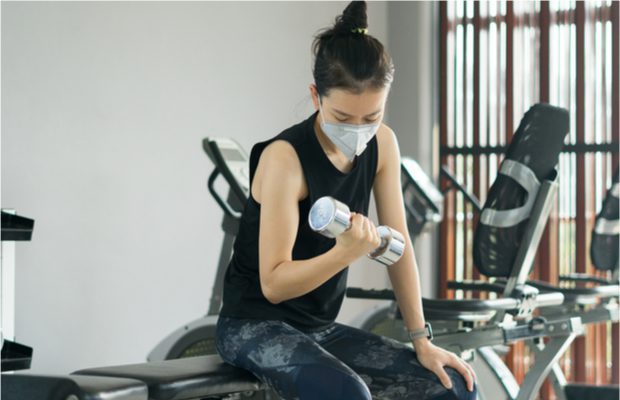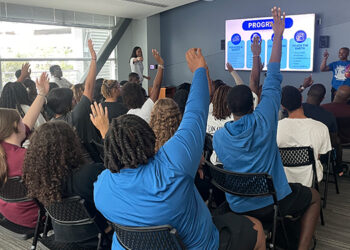
States are slowly reopening, each varied in its guidelines and restrictions.
For George Brown, the director of University Recreation and Wellness at the University of Minnesota-Twin Cities, planning for reopening rec centers starts with determining guiding assumptions. They are as follows:
- Employ a phased approach to facility, program and service reopening.
- Strive to prepare the environment/facilities first to create programmatic and service reopening considerations subsequently.
- Develop all plans for reopening with attention to the customers’ orientation and to a sustainable level of safety and risk management adherence.
- Social distancing guidelines, regulations and financial constraints will limit some planning efforts and execution.
- Develop a “rolling” and dynamic process of updating and reviewing progress and course corrects in 30, 60, 90, 120, 150 and 180-day increments once given the greenlight for having the majority of staff in the facilities.
- Phases of reopening will be developed in a priority scheduling basis.
- Decisions to continue or discontinue an operation will be largely driven by health and safety considerations.
“From this, we are going through very intentional space-by-space audits of the facilities,” said Brown. “We will look at program and service capacity as we continue to work with our institutional leadership on policies and procedures being developed in all areas of the campus.”
Over at Oakland University, the recreation department is also using several guiding principles to make decisions on reopening. “Below are the guiding principles we are using,” said Greg Jordan, the director of University Recreation and Well-Being. “At this time, we haven’t announced anything formally. We are taking into account various guidelines and best practices to apply it to the specifics of Oakland University. Things like partially opening facilities, reduced hours, and relocating strength and cardio equipment seem pretty consistent around the country.”
Oakland’s guiding principles:
- Safety of participants.
- Safety of student employees and professional staff.
- Blending remote and in-person programs.
- Providing modified in-person services when appropriate.
- Communication to campus community and all members.
Across the country from Oakland, the University of Arizona is working on a reopening plan. Troy Vaughn, the director of Campus Recreation, said their best guesstimate for reopening right now is on or around July 1. However, he said the University of Arizona is projecting anywhere from a $1.5 to $2.5 million deficit. Plus, 75% of the Campus Recreation team are affected by mandatory furlough days through the end of June 2021. Most are required to take 26 days of furlough, while higher level administrators are required to take 39.
And yet, Vaughn remains positive and looking ahead. “The good news is my team has been active with virtual programming and our online content continues throughout the summertime,” he said. “My team has developed a great plan for reentry, and I feel confident once we are given the green light to open back up, we will be ready to go to provide a safe environment for patrons to come back to.”
Vaughn shared several considerations for their reopening operations:
- Determining if temperature checks will be done at the door/entryway — waiting on the university to decide.
- Staff will be required to wear masks. Patrons’ mask requirements have yet to be decided.
- Stairwells have been confirmed to either be “up” only or “down” only.
- Hours for summertime have been amended should the center open, due to lack of student staff and cost savings. Regular semester hours will be reduced between 10 to 15 hours weekly to save on operating expenses.
- Equipment will be moved to create safe distancing.
- Pool protocol to maximize distancing and safety procedures will include no furniture on the deck, no laying out, two people per lane, a limited number of people in the shallow end, etc.
BONUS:
Jordan shared a deeper dive into the recommended structure for their communications in their reopening plan, targeting all user groups with non-policy reopening information. It will follow the below outline of message topics and what will be communicated:
Welcome Back to the Rec
- University Recreation and Well-Being’s commitment to students and non-student members.
- Programs and services University Recreation and Well-Being has available in-person and virtual.
Staying Safe
- What is University Rec and Well-Being doing to keep staff and users safe while working, exercising and playing.
Managing Stress
- Resources University Recreation and Well-Being is providing to help students and non-student members with emotional well-being.
Campus Connections
- Who is University Recreation and Well-Being collaborating with on campus to keep students and non-student members engaged.










